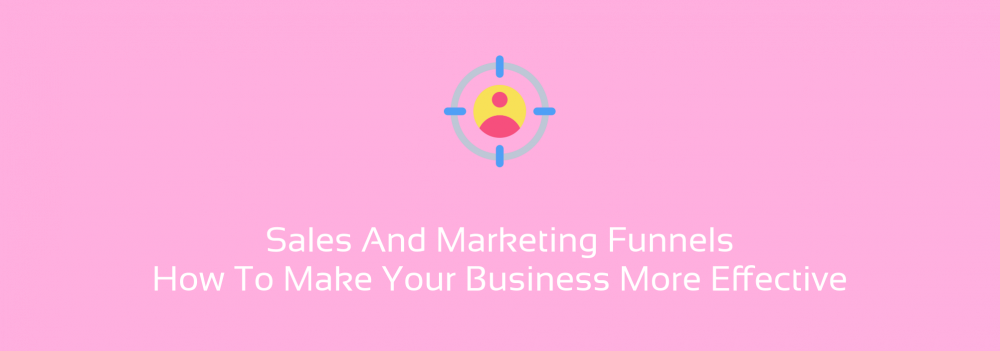
Imagine you got your hands on a cool tool that grabs traffic from multiple online channels and converts it into $$$ that flow directly to your company’s bank account.
Did you know this can be real? A well-thought-out sales funnel allows you to attract traffic, capture leads, and nurture them according to their position on the path to making a purchase. In the end, you get ultra-hot leads that are ready to buy your products and services. And they happily do that!
After reading this guide, you will discover how your brand can take advantage from building marketing funnels and crafting the buyer’s journey map, know what steps it should include, and learn sales strategy tips.
What is a sales funnel
A sales funnel (also known as a conversion funnel) is a sequence of stages your potential customers go through until they make a purchase.
It was invented back in the XIX century according to the AIDA model, which spells out as: Awareness, Interest, Decision, and Action:
- Awareness happens when a potential customer finds out that your product exists.
- Interest is when customers get interested in your brand.
- Decision stage comes when your potential customer is ready to buy and considering several options, including your solution.
- Action is the very bottom of the sales funnel, which is the moment when the potential customer acts and becomes your actual customer (buys a product or starts a trial).
These days, this traditional sales funnel structure is often improved and expanded with new steps such as loyalty and renewed interest.
Now, let’s review the structure of a contemporary sales funnel for the B2B business model.
B2B sales funnel breakdown
The standard funnel consists of 3 layers: top, middle, and bottom.
TOFU: Top of the funnel — Marketing
This is the biggest layer of the sales funnel, as it includes potential customers that haven’t had any contact with your brand yet, as well as prospects that have communicated with your business thorough any of your channels (social media, ads, newsletters, reviews, etc).
This section of the funnel is targeted at creating awareness about your business. There’s no demand or interest at this point, but your task is to create these desires in the leads using different advertising tools and marketing efforts.
When you get in touch with your prospects, your mission is to spark interest. And from this point bring leads to the middle of the conversion funnel.
MOFU: Middle of the funnel — Sales process
The middle of the funnel is its core, which is represented by the sales process. At this stage, your potential customers are involved in the decision-making activity. They start reviewing the solutions offered by your business and comparing them to other options available out there in terms of how well they fit their needs.
Equipped with details about your brand, prospects will dig deeper to examine your pricing plans and other important details. Landing pages, online workshops, and calls are effective in this stage to help persuade prospects to make a purchase.
Some of these prospects might be converted to marketing-qualified leads (MQL). These are people who have reacted to your marketing campaigns in a positive way, but aren’t ready for making a purchase yet.
While some of them may become sales-qualified leads (SQL). These people are highly interested and want to buy a product or service from you.
In this case, your best move would be to capture them and find the right moment to close the deal, which will bring leads to the final stage of the funnel, its bottom.
BOFU: Bottom of the funnel — Customers
Welcome to the bottom of the funnel! At the end of the day, all your work comes down to this layer: if the potential customer makes a purchase or not. The good news is: if they didn’t buy anything, the deal isn’t lost. You can still use some strategies to attract their attention. For example, with the help of special nurture campaigns, you can be in the thoughts of your prospects. And as soon as they are ready, they will become your customers.
If you dig deeper into this topic, you’ll discover more versions of the funnel structure with slightly different of extended sales steps. For example, some experts highlight the fifth loyalty step that takes care of customer satisfaction after they make the purchase, and strives to build lasting relationships with them.
Difference: Sales funnel and marketing funnel
The sales funnel is often mistaken for another similar term — marketing funnel. So, what’s the difference?
As a rule, B2B sales process represented a linear activity, which assumed that the customer was introduced to the brand by marketing specialists in the first place. A marketing funnel was designed to help prospects learn about the solutions offered by the business. As soon as they were acquainted and ready to evaluate the options, sales specialists joined the game, so the sales funnel was just the second part of the marketing funnel.
At the present time, the linear sales process got outdated. In general, people are more informed, frequently having good knowledge of the products, services, and overall situation on the market. They don’t need a marketing expert to educate them about available solutions. That’s why it’s almost impossible to tell where marketing ends and the sales process begins. The borders are blurred.
And that’s where Smarketing comes into force, combining the best practices of sales and marketing teams. In Smarketing, experts join their efforts to make sure the communication with the potential customer ends with a successfully closed deal.
Sales funnel advantages
Specialists point out that out of all prospects you capture, only 15% become your paying clients. So, it is vital to create an effective sales funnel to increase this number.
Now let’s review some of the main advantages you’ll get from having a proper funnel for your project:
- Improved effectiveness. When you know the number of leads that decided not to buy anything from you and the reasons why they disliked your sales pitch, you better understand your target audience. Thus, you no longer invest your time in unqualified leads, which boosts your performance.
- More precise predictions. Tracking the actions of the leads at each funnel step lets you make forecasts about the success or failure of your efforts. For example, with the help of the funnel statistics, you can start understanding what number of prospects you need to get to generate sales.
- Better relationships with customers. With an integrated sales funnel, you can monitor what obstacles prevent people from coming to the next funnel step, know their demands, and identify methods of improving your relationships.
- Ideas for your product updates. Understanding leads’ expectations at every step of the funnel provides you with valuable insights and ideas on how to improve your business.
- Higher return on investments. In addition, a good sales funnel allows scaling your project along with a successful sales strategy, which results in better ROI. It’s enough to build a sales funnel once, and after that you can run many processes automatically.
Taking into account so many benefits, it will be a crime not to make use of a sales funnel in your business strategies.
Final word
Having a sales funnel in place relieves all the soreness you may have from the attempts to build your sales strategy. We hope the sales funnel details we’ve outlined in this article will be helpful and motivate you to craft your own highly-productive sales funnels and increase the success of your business.

